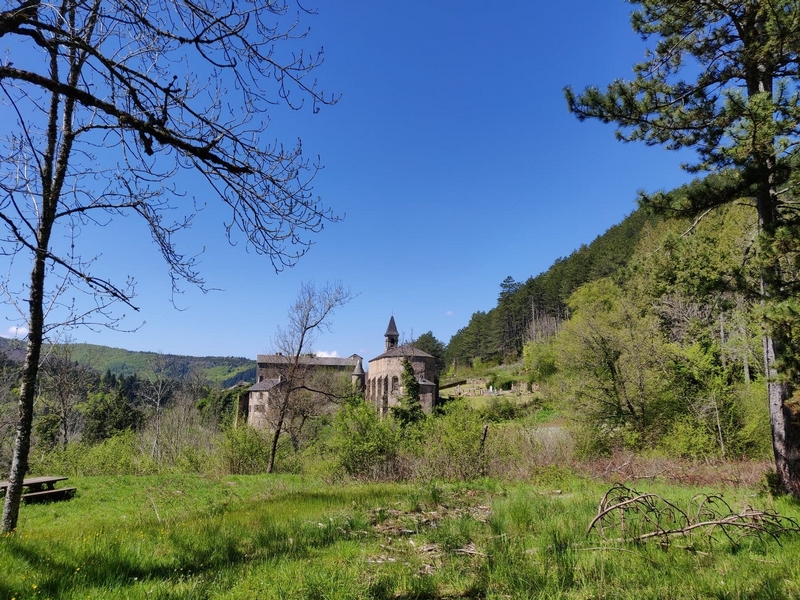
MTB 14 - The 3 rivers challenge – graded black
10 points of interest

Sous bois du Trévezel - Béatrice Galzin  Natural environment
Natural environmentThe Mont Aigoual forest
“Aigoual, Forêt d’Exception”
The French Forestry Office, which manages state forests, launched a programme in 2013 called “Aigoual, Forêt d’Exception” (Aigoual: An Exceptional Forest) with the aim of highlighting the massif’s natural and cultural heritage. The Forestry Office thus tries to foreground the different aspects of its multi-facetted management: production, protection and receiving visitors. One key aspect of this approach, which complements other initiatives by local actors, is to improve visitors’ experience in the forest.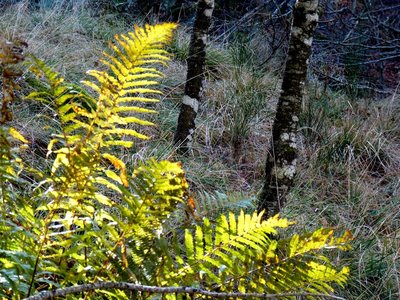
La fougère aigle - Béatrice Galzin  Natural environment
Natural environmentThe hidden life of the forest
Trees grow upwards towards the light while mosses benefit from their shade on the ground and spread out. Like soft cushions or carpets, they hug everything that sticks out of the ground, such as old tree stumps. This soft felted surface is pleasing to see, and an undergrowth without mosses would not be worthy of the name. Legend has it that mosses show which way is north. Wrong!
Mosses indicate a degree of moisture; they protect the soil from drying out by retaining every last drop of dew. They prepare pockets of humus for the future occupants: grasses and herbaceous plants. They also love the damp of tree trunks and can grow there, on the side that is most exposed to the prevailing rains.
Montée au col du Suquet - nathalie.thomas  Landscape
LandscapeCol du Suquet pass
You are at the highest point of the hike. On the right bank of the Dourbie, the path crosses a sheer slope that is alternatively made up of zones of solid granite and other zones where it has decomposed due to weathering into coarse granitic sand. To the south, the views encompass the entire Lingas massif, a high wooded plateau overlooking, further south, the region around Le Vigan and the Languedocian plain.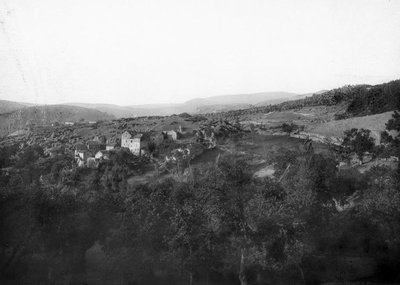
© Fonds Flahault  History
HistoryThe hamlet of Espruniers
This hamlet, which consisted of a sizeable grouping of houses, was inhabited until about 1930. You have stopped on what was probably the threshing floor for grains.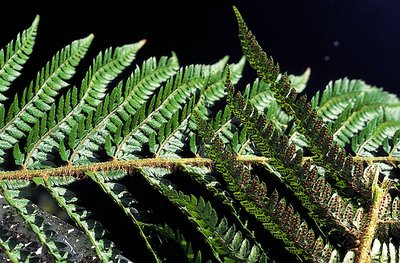
Polystic - © Yves Maccagno  Geology
GeologyThe schist/limestone contact zone
Here, the layers of the schist outcrops are almost vertical in places. This contact between Causses and Cévennes, between the primary bedrock and the limestone layers, is due to a geological fault created by the various movements and constraints that have affected the Earth’s crust. In this zone, the schist bedrock has been pushed upwards by several hundred metres along the fault line compared to the limestone plateau, although the latter is less old.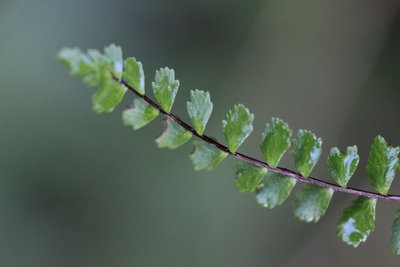
Capillaire - © Valère Marsaudon  Flora
FloraCalcifugous vegetation
This section of the path in the schist zone showcases calcifugous (“limestone-avoiding”) vegetation, which only grows on acid soils (schist or granite): especially chestnut trees, ferns, heather and broom.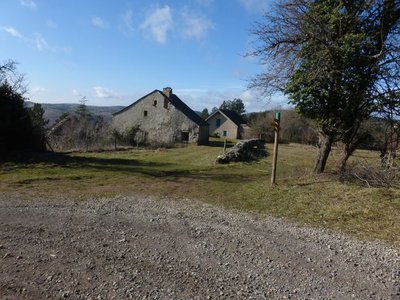
Canayère - nathalie.thomas  History
HistoryCanayère
A former farm turned forester's house in 1880. In the early days of the Mont Aiguoal reforestation, forestry officers lived here year-round during their missions. Forestry workers working on the replanting were allowed to use the outbuildings. Later, only one official resided here. Since 1967, no official has permanently lived here. (B. Mathieu)

Le lavoir des Monts - Béatrice Galzin AgricultureLes Monts wash house
The wash house in Les Monts still has running water but the washerwomen have disappeared for good. The site is magical. The water is clear enough for dragonflies to lay their eggs in and for birds to drink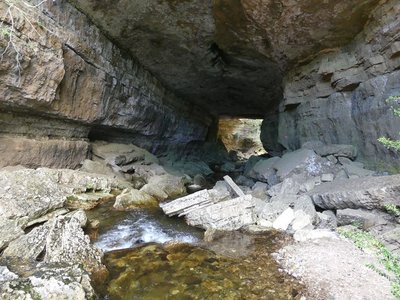
Perte du Bonheur - nathalie.thomas  Water
WaterThe Bonheur river
The Bramabiau site is an example of a karst spring. Here, slightly east of Camprieu, the Bonheur River has dug into the Causse (limestone plateau) and disappears in a natural tunnel. It re-emerges into the open at the bottom of the Aven de Balset, but it twists to the south to disappear again below ground. The river meanders through more than 10 km of tunnels. Then, 700 horizontal meters from its sinkhole, it reappears as a spring! The rock walls of the narrow canyon magnify the sound of its waters and add to its rumbling some acoustic vibrations that are close to a gigantic roaring. This is no longer the tranquil Bonheur, it is the tumultuous Bramabiau.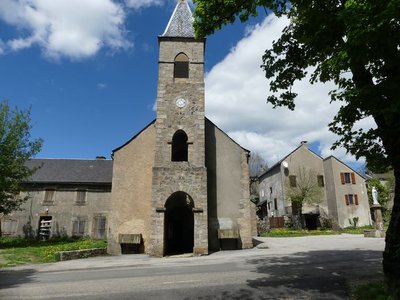
Camprieu - nathalie.thomas  History
HistoryCamprieu
In the 19th century, the village streets were bustling year-round with a throng of artisans, labourers and shopkeepers, who lived in these modest mountain houses that were also suitable for livestock rearing. Camprieu had: two cobblers, six clog makers, two basket makers, one carpenter, two wheelwrights, two farriers, one miller, two stonemasons, one glassworks, one sawmill, one dairy, two grocer’s shops, a haberdashery and ironmonger’s and one shop for ladies’ “fashion and dresses”. There was also a cheese cellar that produced Roquefort until 1932, a hotel and an inn.
Description
Starting from “Camprieu”, head towards "col des Ubertes" via "Le Cros", "Tabarde", "Maison du bois", "Tailladette", "Terondel".
1) At "col des Ubertes" follow "Col du Suquet".
2) At “col du Suquet” follow the GR® trail towards “Le Vieux Hêtre”, then turn left towards “Mont Mal”, "Serre de Cade".
3) From “Serre de Cade”, there is a technical descent to the road. Turn left onto the road for 1 km till you reach "Sous le col des Rhodes".
4) Turn right and follow “Canayère” via "Le pas du Coulet" and "Les Pins noirs", then continue to “Comeiras”
5) At "Comeiras" start the long climb to “La Roque”.
6) Take the road on the left towards "Valat de Malbosc", then turn left to “Les Monts”. Then head towards "Pont de l’Âne" via "La Combette", "La Matte" and "Conduite forcée".
7) At “Pont de l’Âne”, go to “St Sauveur des Pourcils” via "Le Muguet", "La Fonderie", "Valat de la Fonderie". Then head for “Carrefour des Pourcils”.
8) Turn right to return to "Camprieu" via "Travadaire", "Rouveyrolle", "Abîme de Bramabiau", "Perte de Bramabiau", "La mairie", "La Croix basse".
This circuit is taken from the guidebook Massif de l’Aigoual, published by the communauté de communes Causses Aigoual Cévennes as part of the collection Espaces naturels gardois and the label Gard Pleine Nature.
- Departure : Camprieu
- Arrival : Camprieu
- Towns crossed : Trèves, Dourbies, Lanuéjols, and Saint-Sauveur-Camprieu
Forecast
Altimetric profile
Recommandations
Information desks
Tourism & national parc'house
Col de la Serreyrède, 30570 Val d'Aigoual
The Maison de l'Aigoual houses the tourism office Mont Aigoual Causses Cévennes and the Maison du Parc national. This visitor centre provides information on and raises awareness of the Cévennes National Park, its sites and events as well as the rules that must be observed in the National Park's central zone.
On site: changing exhibitions, video projections, Festival Nature events and shop Open year-round
Transport
Access and parking
Parking :
Calculateur d'itinéraire Lio
Utilisez le calculateur liO pour organiser votre trajet en région Occitanie.
Autres régions
Calculez votre itinéraire en Auvergne Rhône Alpes sur Oùra
Biodiversité autour de l'itinéraire
Source

Report a problem or an error
If you have found an error on this page or if you have noticed any problems during your hike, please report them to us here:


